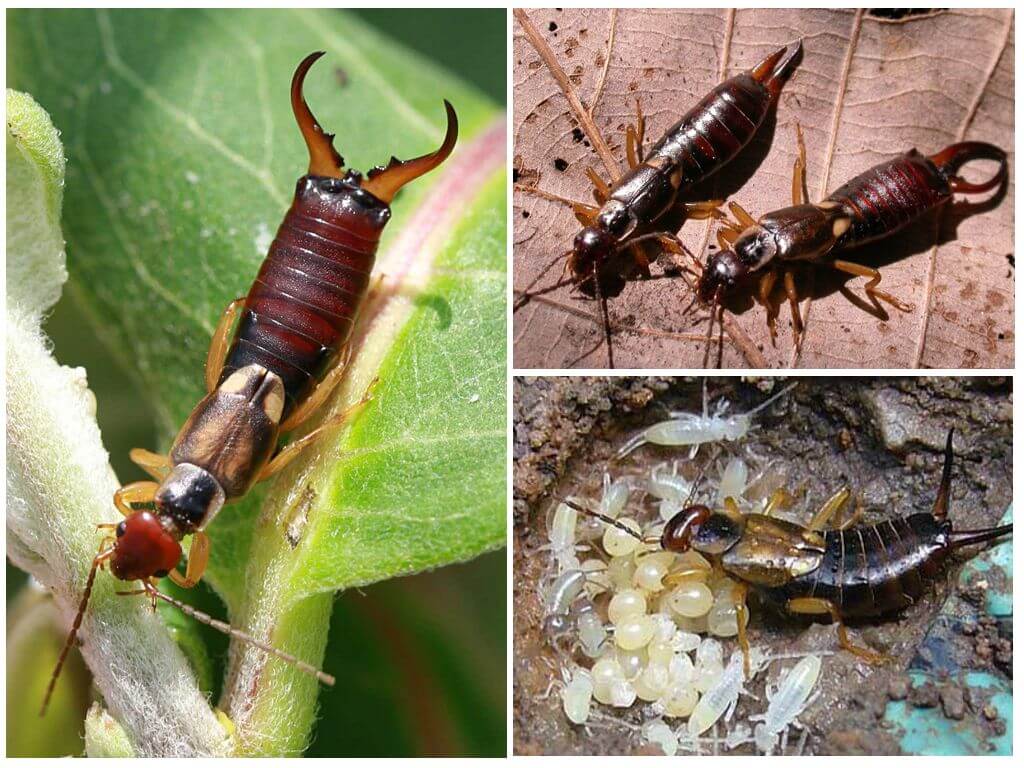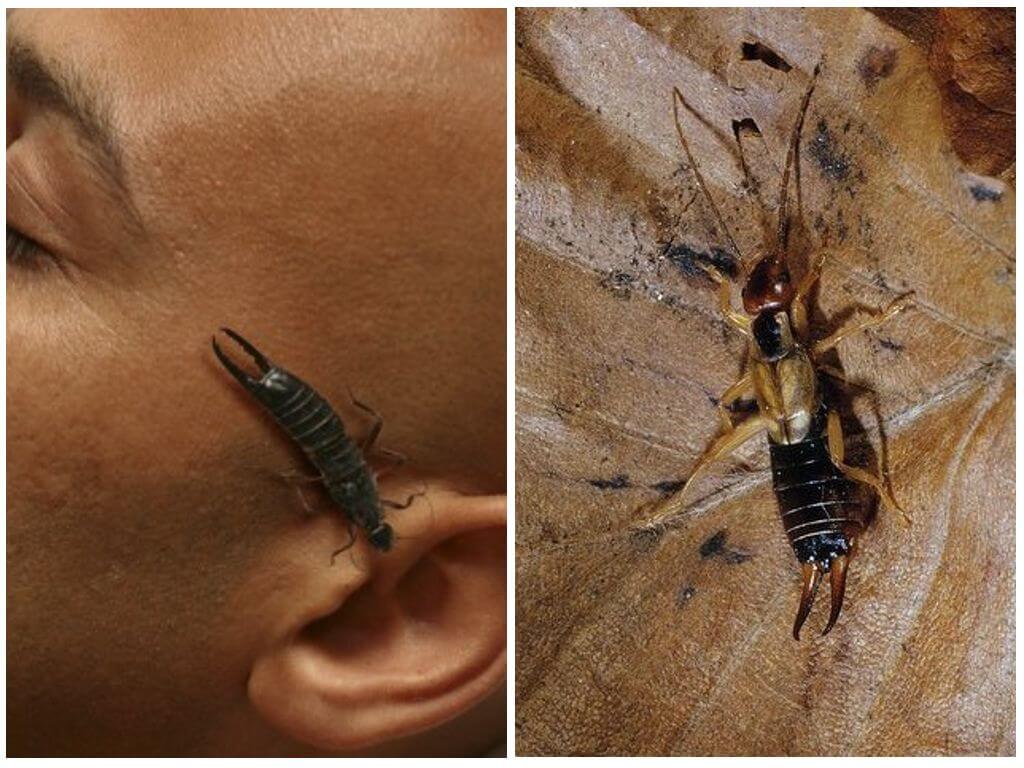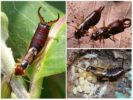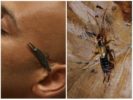- Earwig
- Earwig
Many in childhood heard terrible stories that an earwig in a person’s ear gnaws at the eardrum, sneaks into the brain and lays eggs in it. The sight of the insect is really awesome and is capable of inspiring horror on impressionable persons. And the very name “earwig” makes you think about the consequences of contact with such an unusual representative of insects.
Characteristics
In everyday life earwig often called two-tailed. However, this opinion is erroneous in view of the fact that these are completely different insects. Their only similarity lies in the bifurcated “tail”, consisting of two pairs of tserkov.
Earwig, it’s also a tick or a pinch - a representative of the winged-winged detachment:
- males are always larger than females and their length ranges from 13-17 mm, females grow no more than 12-14 mm;
- the body is oblong, slightly flattened chestnut color;
- well-developed legs with which the insect moves quickly, dirty yellow;
- a head with small closely spaced eyes is decorated with long filiform tendrils, often their length is two-thirds of the size of the whole body;
- the end of the body is crowned with a pair of so-called ticks, which biologists call forceps, in males they are equipped with peculiar denticles, in females a “claw” is smooth.

Tongs perform a number of vital functions, including the retention of food objects, and protection from threatening factors. In a frightened state, the earwig bends the trunk with an arc, exposes the mites to the outside and gives out a special secret. In this form, it is very similar to a scorpion.
Interesting!
Earwigs have two pairs of developed wings that, when folded, hide under the elytra. However, they use them extremely rarely and reluctantly, preferring to run fast.
Dvukhvostki, also called thymus tails, belong to the order of six-legged maxillary. Their sizes do not exceed 5 mm. Although there are exotic species with a body length of up to 50 mm. The body is devoid of pigmentation and eyes. Cerci, which are mistaken for a tail, can be either very short or claw-shaped, which is why two-tails are often confused with earwigs.
The habitats of insects also differ. Two-tails live mainly in the upper layers of the soil, in humus, plant debris. Pincers prefer wood crevices, shelters under stones, hide under foliage or in inflorescences.
Why are insects dangerous to humans?

After listening to horror stories, many are interested in the answer to the question of what will happen if an earwig or a two-tailed fish creeps into the ear. It’s worth immediately debunking the myth that the insect will not bite the eardrum. A man, and even more so his ear, is not at all of interest to him. Neither the earwig nor the tailed tail are blood-sucking parasites. They prefer to lay eggs in the surface layers of the soil, after digging a tunnel and arranging a nest. There was not a single case that an earwig or a two-tailed in the ear did egg laying was recorded.
The chances of penetration into the human hearing organs in insects are exactly the same as in ant or any other small representative of the fauna. The scenario is allowed that, during outdoor recreation, a pinch or a forktail nevertheless accidentally creeps into a sleeping person’s ear, however, she will not be able to get beyond its limits.Therefore, the answer to the question of whether the double-tail can fit into the ear can be positive, but there are no special reasons for worries. According to statistics, cockroaches in the ear turn out to be much more common than the ticks. But if they appeared in the house, it is desirable get rid of earwigs.
Interesting!
There are several hypotheses why the earwig was so named. According to one of them, this is due to the shape of the wing, which is very similar to the shape of the ear. There is a more incredible version associated with the old device for piercing the earlobes, outwardly similar to ear mites.
Earwig
What to do if an earwig crawls into your ear:
- Do not succumb to panic.
- Seek help at a medical facility where the ENT will gently wash the aggressor with water and extract it.
- If this is not possible, drop any vegetable oil into your ear and use a cotton swab to get the offender.
Despite their formidable appearance, earwigs can be beneficial. They eat small garden and garden pests, including aphids, butterfly larvae, spider mites. Malicious activity is damage to crops and flower plants.





